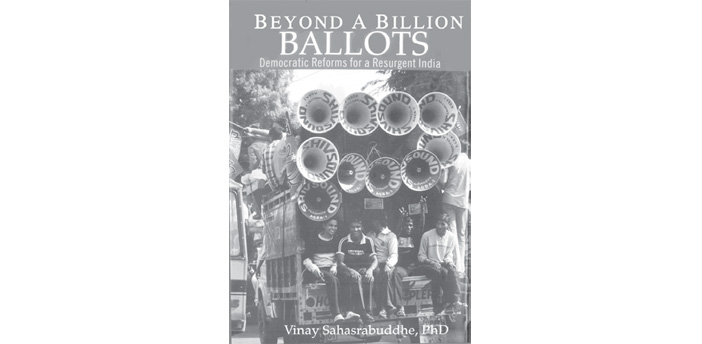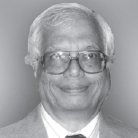Democratic Reforms for a Resurgent India by Vinay Sahasrabuddhe
(New Delhi: Wisdom Tree, 2013)
The book under review is based on the author’s revised Ph. D. thesis. But it is not merely a theoretical work, written on the basis of study of published materials; Dr. Sahasrabuddhe draws heavily from his rich experience as a student activist, journalist, and of over 30 years in politics as the Secretary General of the Rambhau Mhalgi Prabodhini (RMP), the political training centre of the BJP.
The author, in 300 pages divided into seven chapters, discusses India’s democracy, its political culture, populism, electoral compulsions and reforms needed to further strengthen the electoral system. In a neatly linear narration, he critiques the Indian electoral system – the bedrock of India’s democracy – and argues for its ‘reexamination’ and reforms. Undoubtedly, Indian democracy is a matter of pride for a majority of Indians on a variety of grounds: It is the largest democracy in the world with a total electorate of over 814.5 million as was recorded in the recently concluded 16th General Elections. There were one million polling booths to elect 543 members to the Lok Sabha from amongst 8,251candidates.
The Indian democracy has managed to survive and thrive, among the very few to do so from the developing countries which became independent in the post-World War II period. It is held in high esteem by many in the developing world. The smooth transfer of power after the recent general elections shows the strong roots of the Indian democracy.
We Indians are critical of our democracy, but whenever I have book review Beyond a Billion Ballots Democratic Reforms for a Resurgent India by Vinay Sahasrabuddhe (New Delhi: Wisdom Tree, 2013) travelled to neighbouring countries or in Southeast Asia or read their newspapers, I often find very laudatory remarks on Indian democracy. In most of these countries, people want their politicians to follow in the footsteps of Indian politicians!
But very rightly, these aspects though ego-satisfying, are not enough to sustain Indian democracy as a vibrant democracy, says the author. He points to major limitations or drawbacks in the working of functional democracy in India. One, none of the political parties in India since Independence exhibited any unity of purpose, whether they formed government on their own or through a coalition. It is appropriate to call political parties in India as powersharing- fronts. Major political parties, like the Congress and the BJP have not been able to perform well their functions as mediators between power wielders and the people.
Two, representative character of elected members is increasingly uncertain. Often, an elected representative is not elected by a majority. As a matter of fact, in a constituency, greater the number of candidates running, smaller the percentage needed to get elected. In the previous Lok Sabha for instance, 78 percent of MPs won the elections, “despite the fact that 50 percent of the voters in their respective constituencies have voted against them…” This questions the very legitimacy of representative democracy. The author does not hesitate to generalise: “Should such a state of affairs continue for long, we will have neither good governance nor genuine democracy.”
Three, political parties have failed to work as instruments to translate people’s “discontent and disappointment”, into a political process to find solutions to public grievances. Rightly, political parties, to survive, have used populism. It is dangerous to Indian democracy from a long term perspective. Vinay Sahasrabuddhe not only analyses deficiencies in the working of Indian democracy, but also makes a few concrete suggestions to improve the working of it. Primarily, he re-examines the political system – Parliamentary government and First-Past-The-Post (FPTP) electoral system to elect MPS. This book should be read by every politician and political scientist.


